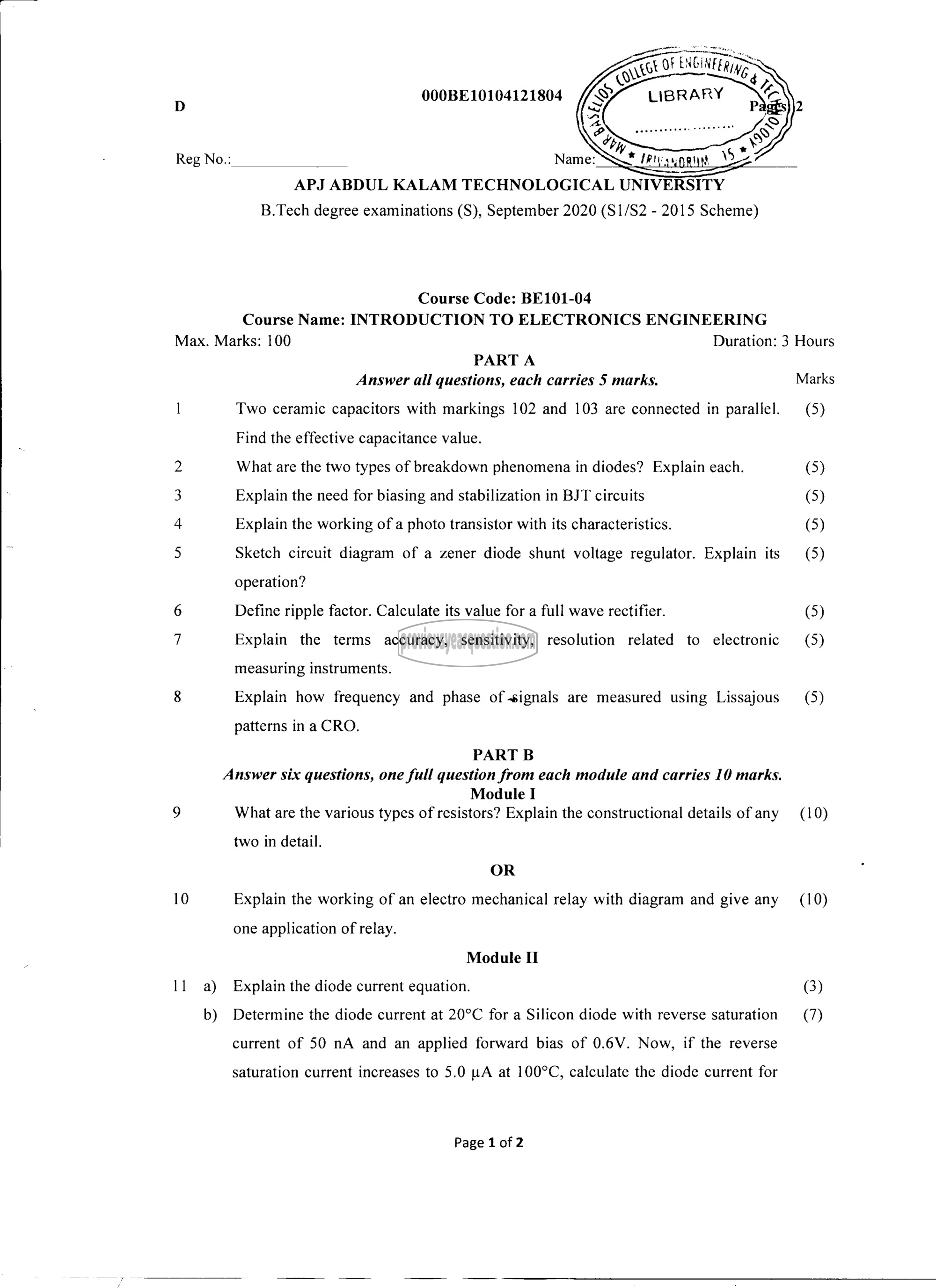APJ ABDUL KALAM TECHNOLOGICAL UNIVERSITY Previous Years Question Paper & Answer
Semester : S1 and S2
Subject : INTRODUCTION TO ELECTRONICS ENGINEERING
Year : 2020
Term : SEPTEMBER
Branch : MECHANICAL ENGINEERING
Scheme : 2015 Full Time
Course Code : BE 101-04
Page:1
D 000BE10104121804 489 3
Reg No.: Name: ⋡∣⋅∖
APJ ABDUL KALAM TECHNOLOGICAL UNIVERSITY
B.Tech degree examinations (S), September 2020 (51/62 - 2015 Scheme)
Course Code: BE101-04
Course Name: INTRODUCTION TO ELECTRONICS ENGINEERING
Max. Marks: 100 Duration: 3 Hours
PART A
Answer all questions, each carries 5 marks. Marks
1 Two ceramic capacitors with markings 102 and 103 are connected in parallel. (5)
Find the effective capacitance value.
2 What are the two types of breakdown phenomena in diodes? Explain each. (5)
3 Explain the need for biasing and stabilization in BJT circuits (5)
4 Explain the working of a photo transistor with its characteristics. (5)
5 Sketch circuit diagram of a zener diode shunt voltage regulator. Explain its (5)
operation?
6 Define ripple factor. Calculate its value for a full wave rectifier. (5)
7 Explain the terms accuracy, sensitivity, resolution related to electronic (5)
measuring instruments.
8 Explain how frequency and phase of signals are measured using Lissajous (5)
patterns in ೩ CRO.
PART B
Answer six questions, one full question from each module and carries 10 marks.
Module I
9 What are the various types of resistors? Explain the constructional details of any (10)
two in detail.
OR
10 Explain the working of an electro mechanical relay with diagram and give any (10)
one application of relay.
Module II
11 ஐ Explain the diode current equation. (3)
b) Determine the diode current at 20°C for a Silicon diode with reverse saturation (7)
current of 50 nA and an applied forward bias of 0.6V. Now, if the reverse
saturation current increases 10 5.0 pA at 100°C, calculate the diode current for
Page 1 of 2
